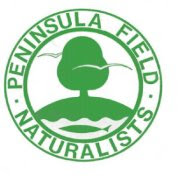The weather forecast for Thursday called for heavy thunder showers throughout the day and this time the weatherman was spot on. The heavy rains in Hamilton called for a change of plans. A drive along the Niagara River (Fort Erie to Chippawa) was chosen as an alternate for our morning of birding. Winston Churchill, while visiting Niagara Falls in August of 1943, described the Niagara Parkway as "the prettiest Sunday afternoon drive in the world". Though it was a Thursday it was still a pretty drive (especially when birding).
The first birds sighted were considerably larger. 3 Great Egrets (#161) were hunting in the shallows of the lake.
Residents across the street maintain the gardens on the slope above the rocks and they have placed martin houses on the boulevard. The houses were a beehive of activity with the adult Purple Martins flying back and forth to feed their demanding young.
All three egrets would leave, allowing us to concentrate on the early shorebird arrivals. In October of last year, a rare Eurasian species was present for a few weeks. It took two attempts, each an hour long, for Jean and I to tick the lifer Curlew Sandpiper. Check out noflickster's post for a retelling of his journey to a foreign country to observe this lifer bird.
Though there was no Eurasian bird this day we observed 2 Spotted Sandpiper, 5 Semipalmated Sandpiper and 1 White-rumped Sandpiper, #162 for the year list (The white rump visible when stretching its wings.).
One camera shy White-rumped Sandpiper
With all the shorebirds identified and thrilled we had introduced a lifer White-rumped Sandpiper to Frank and Ruth, we left the Lake Erie shoreline to look for birds along the upper Niagara River. This is when I thought we would see some egrets as there is a rookery on Motor Island (near the southern tip of Grand Island).
At one stop on the river there were many Double-crested Cormorants on the water. 3 Great Egrets (I suspect the same 3 seen at Jaeger Rocks) stood on the Canadian side of the Niagara River. Further downstream we stopped near a creek with views of Strawberry Island State Park and a building that reminded me of a more famous building on the River Thames. I spotted an Osprey roosting in a tree on Strawberry Island, the occasional Common Tern flying along the river, a Belted Kingfisher, and a couple Great Egrets in flight, keeping to the U.S. side. Not carrying the proper identification I assume.
Driving to Chippawa we would spot a few more Belted Kingfishers (an adult feeding its young) but not much else. Luckily the heavy rains held off until our morning of birding along the Niagara River was done. Come winter there will be quite a number of waterfowl on the upper river. It'll be cold and I will most likely be wishing it was summer again. I highly doubt Winston travelled the parkway on a freezing cold January day. Unless he was a mad keen birder.








